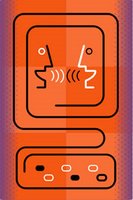
The following is a guest post by
Jeff Evans (SLP and Assessment Project Director with
Pearson Assessments ), a member of the
IQs Corner Virtual Community of Scholars project.
------------------------------
I want to believe the double-deficit theory has predictive strength for reading ability, because it is such a parsimonious theory. After
writing for this blog about Vukovic & Siegel, 2006, “The Double-Deficit Hypothesis: A Comprehensive Analysis of the Evidence.” I’ve continued to read about what we know and what we don’t know regarding the double-deficit theory. I recently discovered this excellent book:
- H. L. Swanson, K. R. Harris, & S. Graham (Eds), (2003). Handbook of learning disabilities. New York: Guilford Press.
The chapter by Bowers & Ishaek entitled
“RAN's contribution to understanding reading disabilities” was very good. I thought I would be provided with a strong dichotomous viewpoint on RAN and its relation to reading (from what I had read in Vukovic & Siegel, 2006.) I was wrong, and surprised. Bowers sees the evidence somewhat less starkly than Vukovic, but not entirely differently. Recall this statement in Vukovic’s 2006 article:
There is a lack of evidence to support the hypothesis that deficits in naming speed skills are independently related to reading impairment. Research that has examined the independence of naming speed from phonological awareness has demonstrated inconsistent findings, with most studies supporting naming speed as a phonological variable.
What is the upshot? We are left with a sticky issue. Plenty of good evidence that RAN measures something associated with reading; likely consistent with studies suggesting three deficits, not just two: phonological awareness, naming speed, and orthographic awareness.
[Blog dictator note - below is the reference and abstract for this chapter. Evans provided a lenghty bulleted set of comments/conclusions from the chapter. For the sake of blog post brevity I have posted that additional information in a separte pdf file that can be accessed by clicking
here]
Bowers. P.G., & Ishaek, G. (2003). RAN's contribution to understanding reading disabilities. In H. L. Swanson, K. R. Harris, & S. Graham (Eds), Handbook of learning disabilities (pp. 140-157). New York: Guilford Press.- Abstract: Much research evidence has accumulated demonstrating that phonological processing, especially sensitivity to the individual phonemes in oral language, plays an important role in learning to read not only English but other languages as well. A major issue for the field investigating cognitive bases for reading disabilities is that of the sufficiency of this factor in explaining reading difficulties. Are other cognitive differences (e.g., working memory and naming speed) which characterize reading disabled versus normally achieving readers just correlates of the phonological problems or consequences of poor reading? Or, are they somewhat independent correlates or causes of reading difficulties? This chapter addresses one variable for which this question has been debated, the rapid naming of highly familiar visual symbols. Is slow naming a marker for underlying problems associated with reading acquisition not explained by phonological difficulties (Bowers & Wolf, 1993; Wolf & Bowers, 1999)? Or, is slow naming speed a type of phonological problem partially distinct from phoneme awareness but still tapping a similar underlying deficit (e.g., Wagner, Torgesen, & Rashotte, 1994)? Although the debate about the nature of the deficit underlying slow naming has not been resolved, the results of the many studies in this area have enriched our knowledge about reading acquisition and reading fluency. The perspective taken in this chapter is that slow naming speed marks a second core deficit associated with reading disabilities whose effects are reflected in a particular profile of reading skills.
Technorati Tags:
psychology,
educational psychology,
school psychology,
education,
cognition,
intelligence,
reading,
learning disabilities,
RAN,
dyslexia












